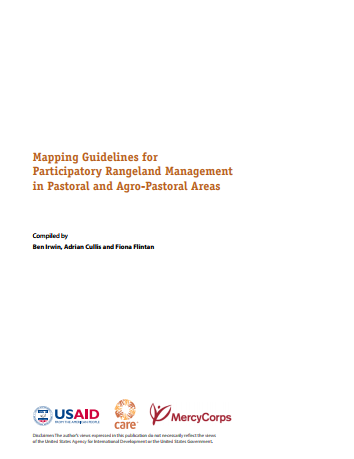Resource information
The purpose of these Mapping Guidelines is to support development practitioners (individuals and organizations) working in the rangelands and sub-humid grasslands of Ethiopia. Specifically, resource mapping can assist with investigating rangeland management systems, negotiating rangeland management plans, and implementing and monitoring progress in Participatory Rangeland Management (PRM). The Mapping Guidelines will provide rangeland management practitioners with a tool to help establish PRM within community, district, zone and regional rangeland management offices across Ethiopia. At a national level it is also hoped these guidelines will contribute towards efforts aimed at sustainable use of rangeland resources and arresting and reversing rangeland degradation. The Mapping Guidelines are a contribution towards the overall national development goals of improved livestock productivity, greater resilience building and poverty reduction. The principles of participatory mapping, as outlined in these guidelines, may also be valuable in supporting and informing other development planning processes, including infrastructure development, the delivery of services, and complementary non-livestock natural resource-based economies. These guidelines outline the three stages of a mapping exercise; with information provided on the purpose, methods and planned outcomes of each stage. • Preparation • Facilitation • Validation Within each of the three stages the guidelines identify a series of separate steps that need to be taken to achieve the outcomes. The book is structured to enable easy access through this step-by-step process. Translated and summarized statements from mapping participants have been included throughout to illustrate some of the key aspects of mapping. In the final section, examples of the practical application of participatory resource mapping within the PRM context are also presented.


